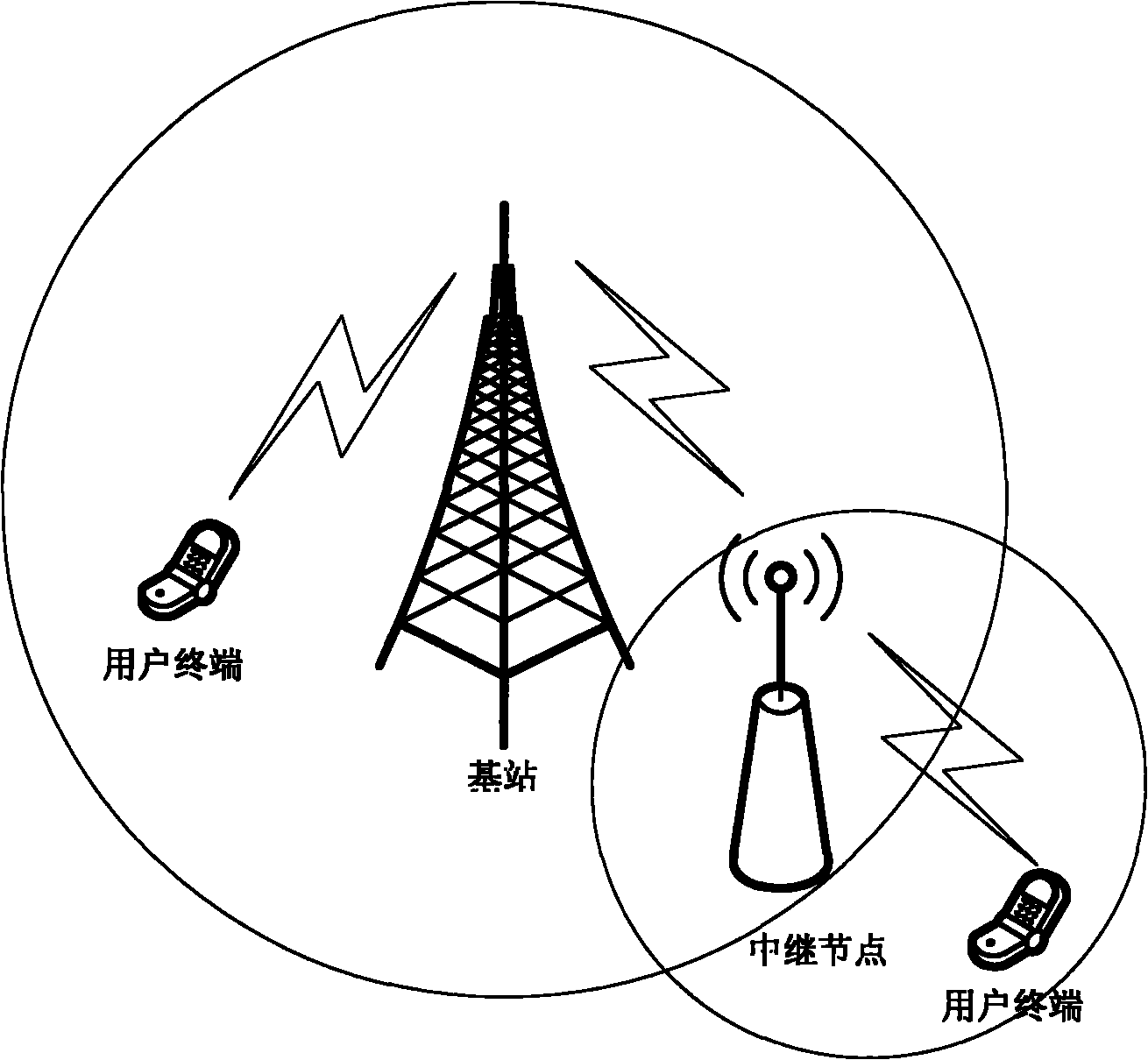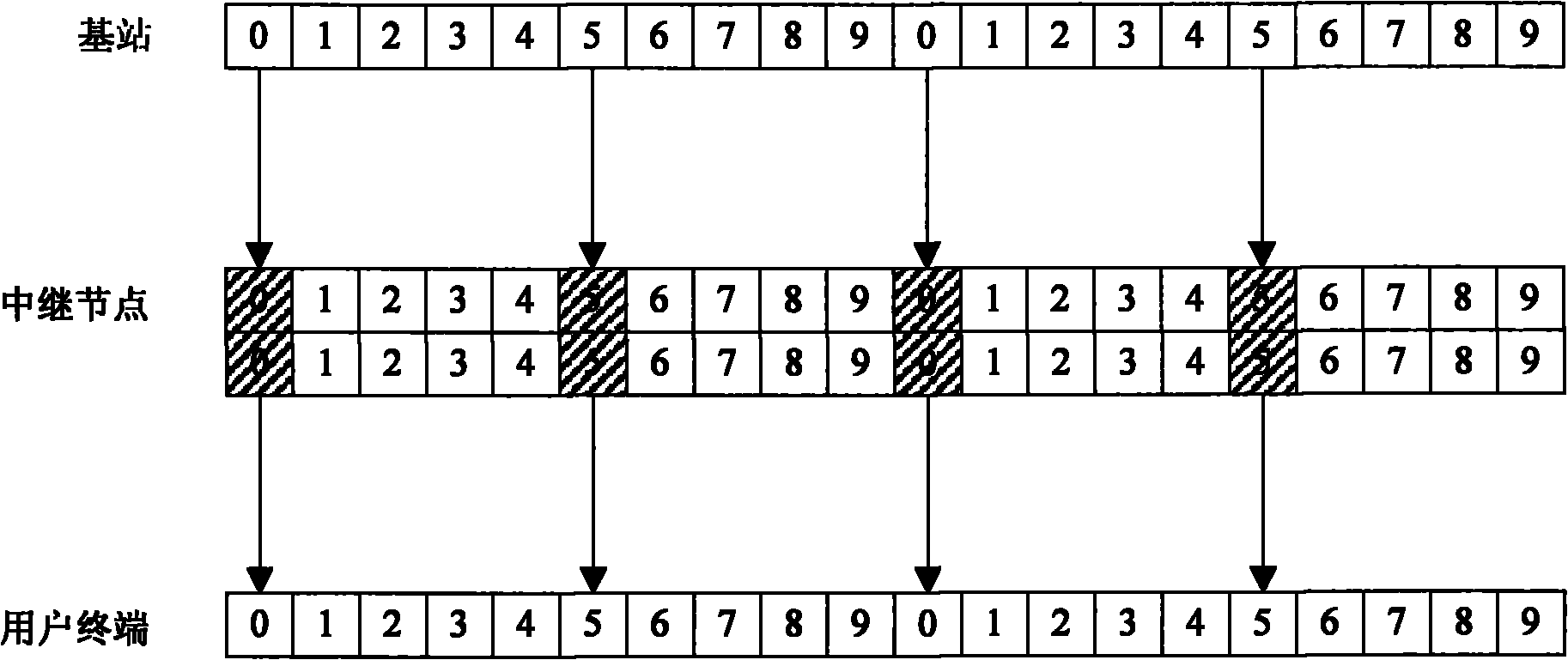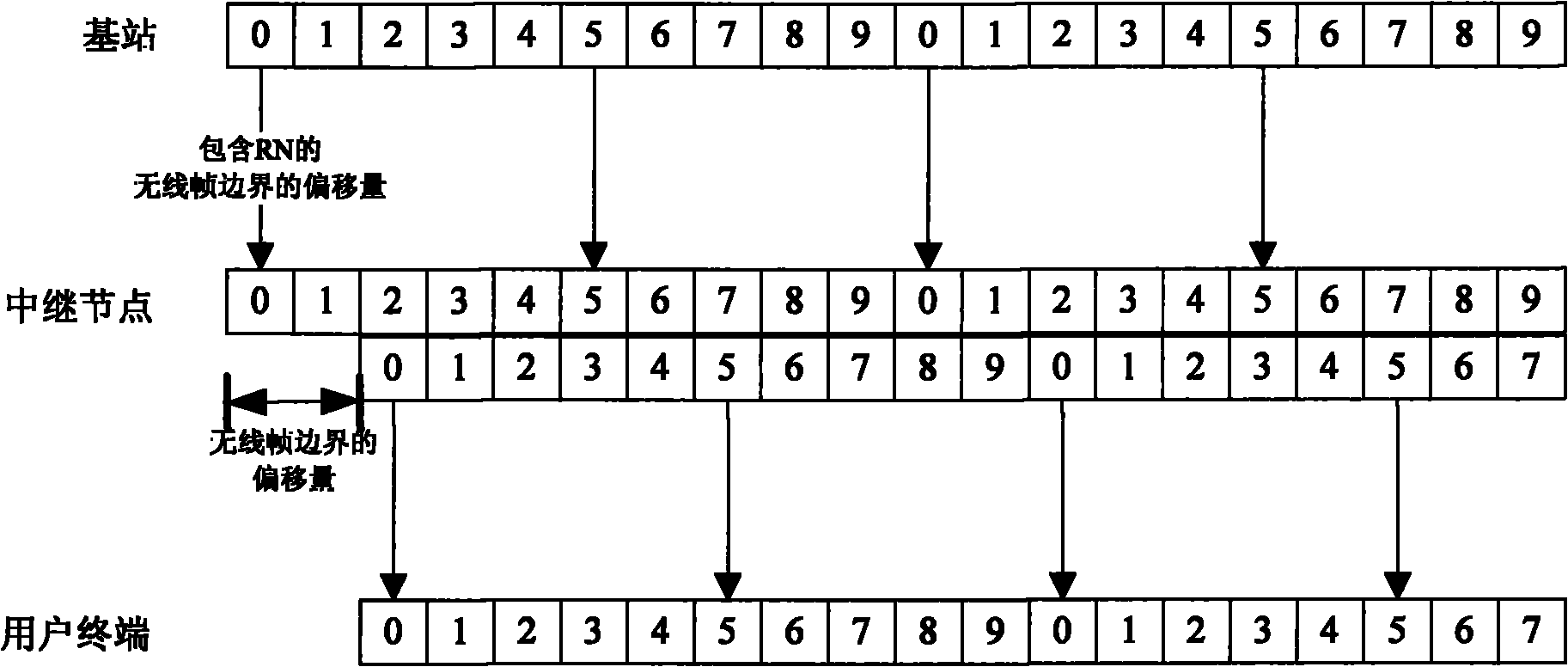Method for solving conflict of system broadcast information of relay node
A technology for system broadcast information and relay nodes, which is applied in the field of resolving relay node system broadcast information conflicts, can solve problems such as simultaneous reception conflicts, relay node system broadcast information conflicts, etc., and achieves the goal of avoiding simultaneous reception and transmission of system broadcast information Effect
- Summary
- Abstract
- Description
- Claims
- Application Information
AI Technical Summary
Problems solved by technology
Method used
Image
Examples
Embodiment 1
[0056] Embodiment one, adopt technical scheme one
[0057] Such as image 3 As shown, it shows how to use the present invention to realize that the RN's system broadcast information does not conflict when receiving and sending system broadcast information:
[0058] Each square in the figure represents a TTI width (1ms) in the timing. Each radio frame (10ms) includes 10 subframes (1ms), which are respectively labeled as 0-9.
[0059] The Donor-eNB notifies the RN of the offset of the wireless frame boundary of the RN through the system broadcast information;
[0060] The RN receives the system broadcast information including the offset of the RN's radio frame boundary, determines its own radio frame boundary, and receives and sends the system broadcast information according to the transmission cycle specified by LTE.
[0061] In this way, the RN receives and sends the system broadcast information staggered in the time domain, ensuring that the system broadcast information do...
Embodiment 2
[0066] Embodiment two, adopt technical scheme one
[0067] Such as Figure 4 As shown, the Donor-eNB notifies the RN of the offset of the radio frame boundary of the RN through dedicated signaling;
[0068] The RN receives the dedicated signaling containing the offset of the RN's radio frame boundary, determines its own radio frame boundary, and receives and transmits system broadcast information according to the transmission cycle specified by LTE.
[0069] In this way, the RN receives and sends the system broadcast information staggered in the time domain, ensuring that the system broadcast information does not conflict.
[0070] Wherein, the dedicated signaling refers to the dedicated signaling specifying the UE or the dedicated signaling specifying the RN, which may be a field representing the offset of the radio frame boundary added to the existing dedicated signaling, or may be Define new dedicated signaling to transfer the offset of the radio frame boundary; that is, ...
Embodiment 3
[0073] Embodiment three, adopt technical scheme two
[0074] The RN presets the offset of the wireless frame boundary of the RN for itself;
[0075] The RN notifies the Donor-eNB of the offset of the wireless frame boundary through dedicated signaling, such as Figure 5 shown;
[0076] After receiving it, the Donor-eNB determines the subsequent scheduling sequence according to the offset of the radio frame boundary of the RN.
[0077] Wherein, the dedicated signaling refers to the dedicated signaling for specifying the UE or the dedicated signaling for specifying the RN, which may be to add a field in the existing dedicated signaling to represent the offset of the radio frame boundary, or to define The new dedicated signaling is used to transfer the offset of the radio frame boundary; that is, the RN informs the Donor-eNB of the offset of the radio frame boundary through dedicated signaling, which can be implemented in one of the following ways:
[0078] Mode 1: The RN adds...
PUM
 Login to View More
Login to View More Abstract
Description
Claims
Application Information
 Login to View More
Login to View More - R&D Engineer
- R&D Manager
- IP Professional
- Industry Leading Data Capabilities
- Powerful AI technology
- Patent DNA Extraction
Browse by: Latest US Patents, China's latest patents, Technical Efficacy Thesaurus, Application Domain, Technology Topic, Popular Technical Reports.
© 2024 PatSnap. All rights reserved.Legal|Privacy policy|Modern Slavery Act Transparency Statement|Sitemap|About US| Contact US: help@patsnap.com










